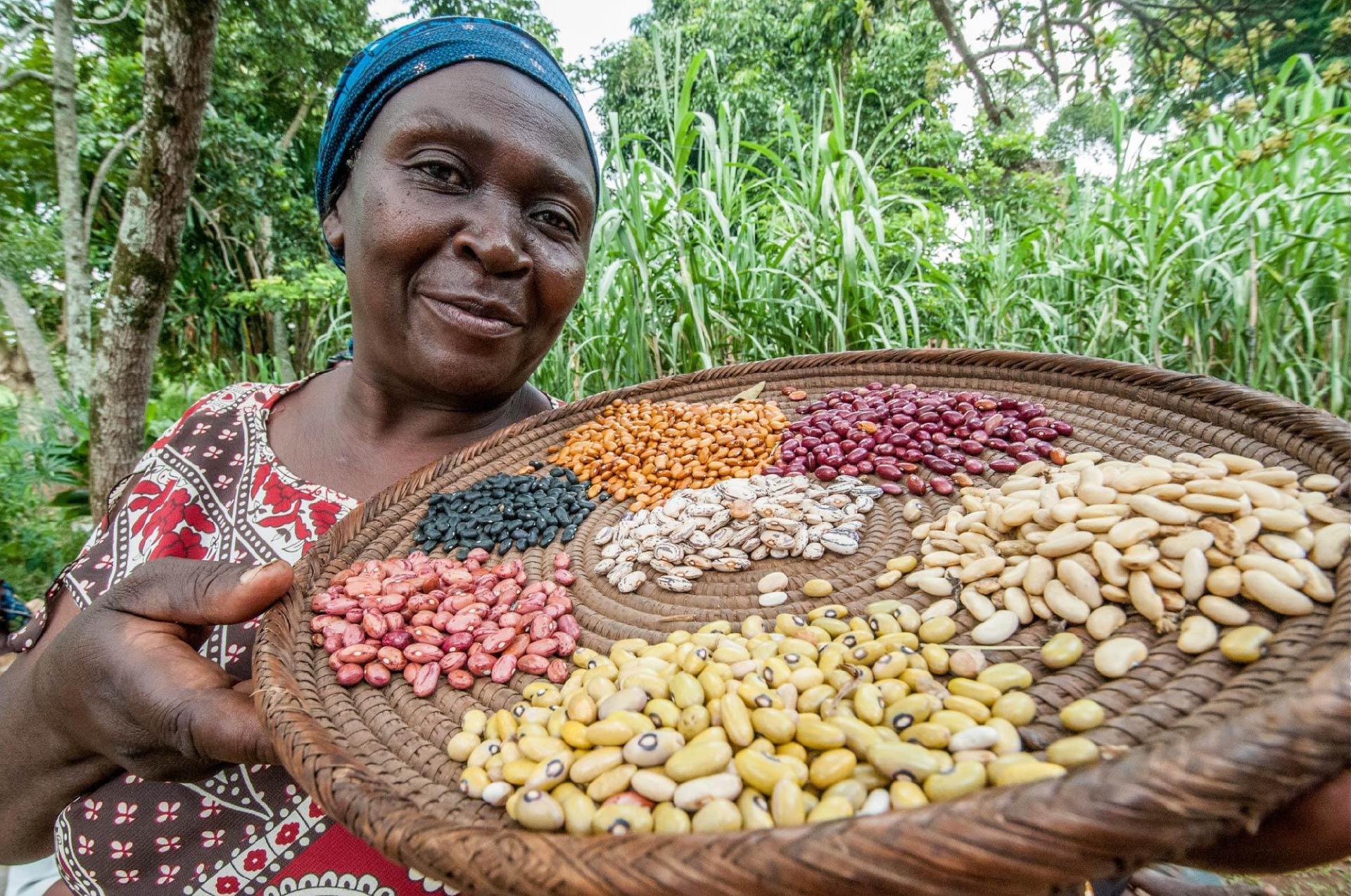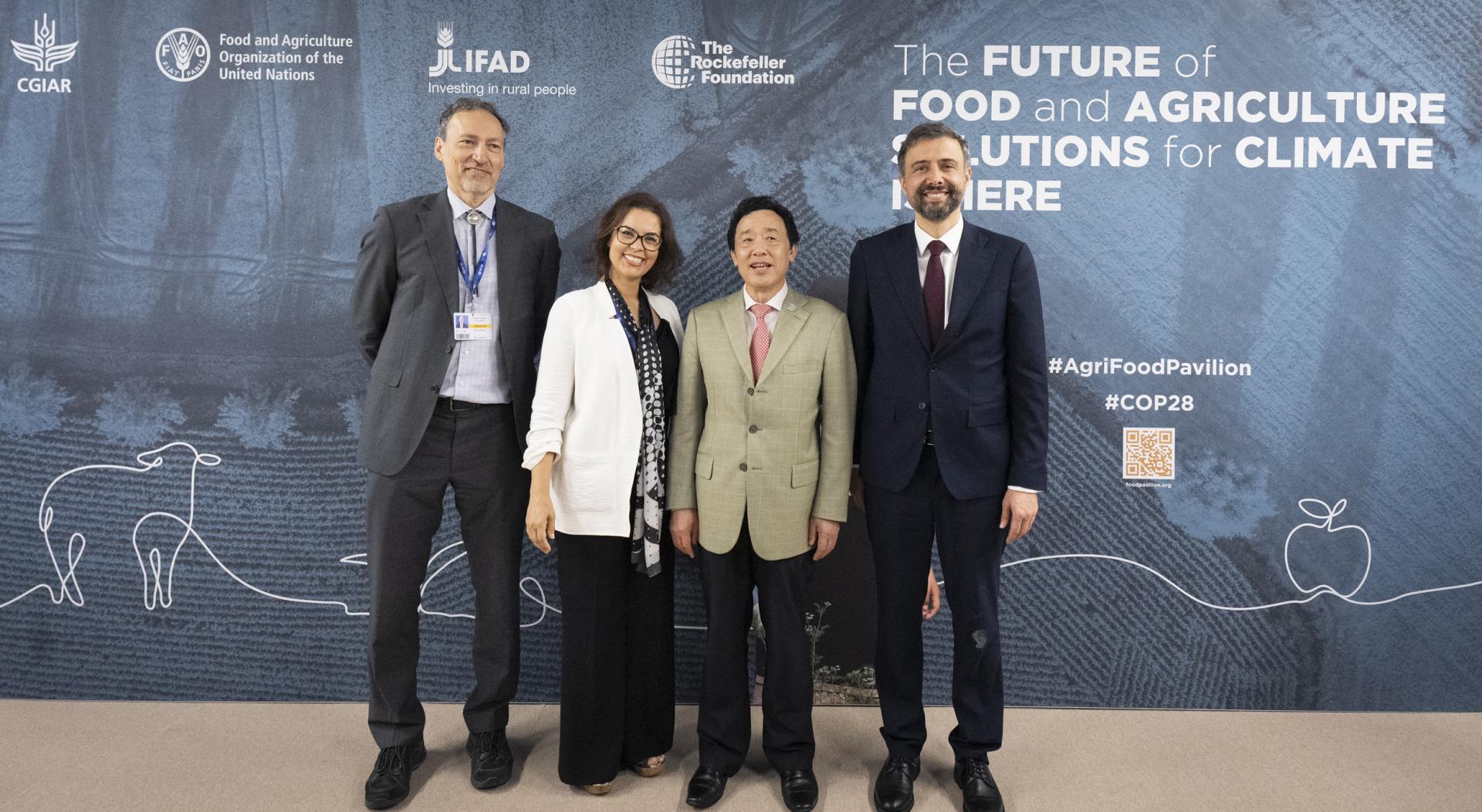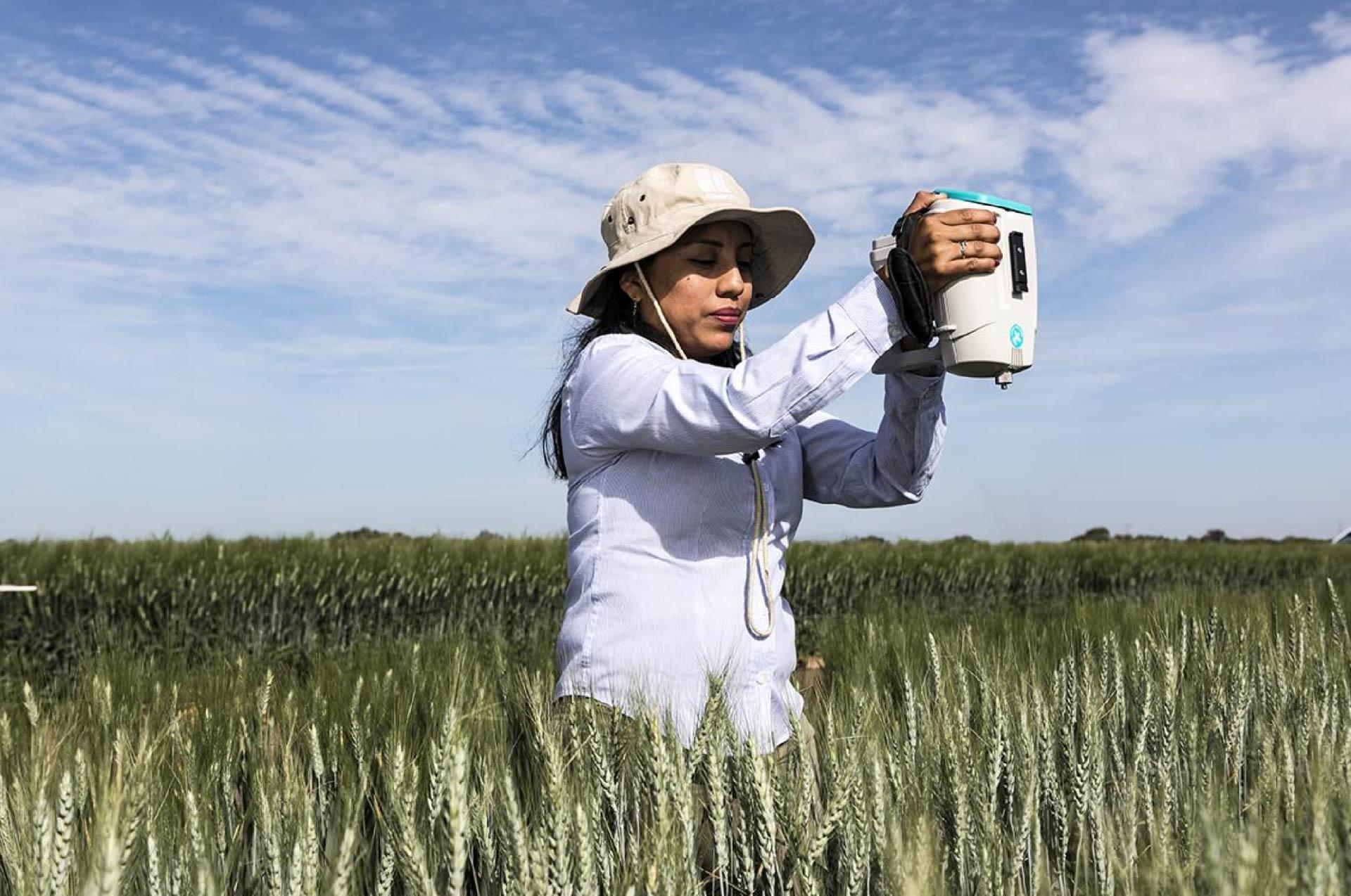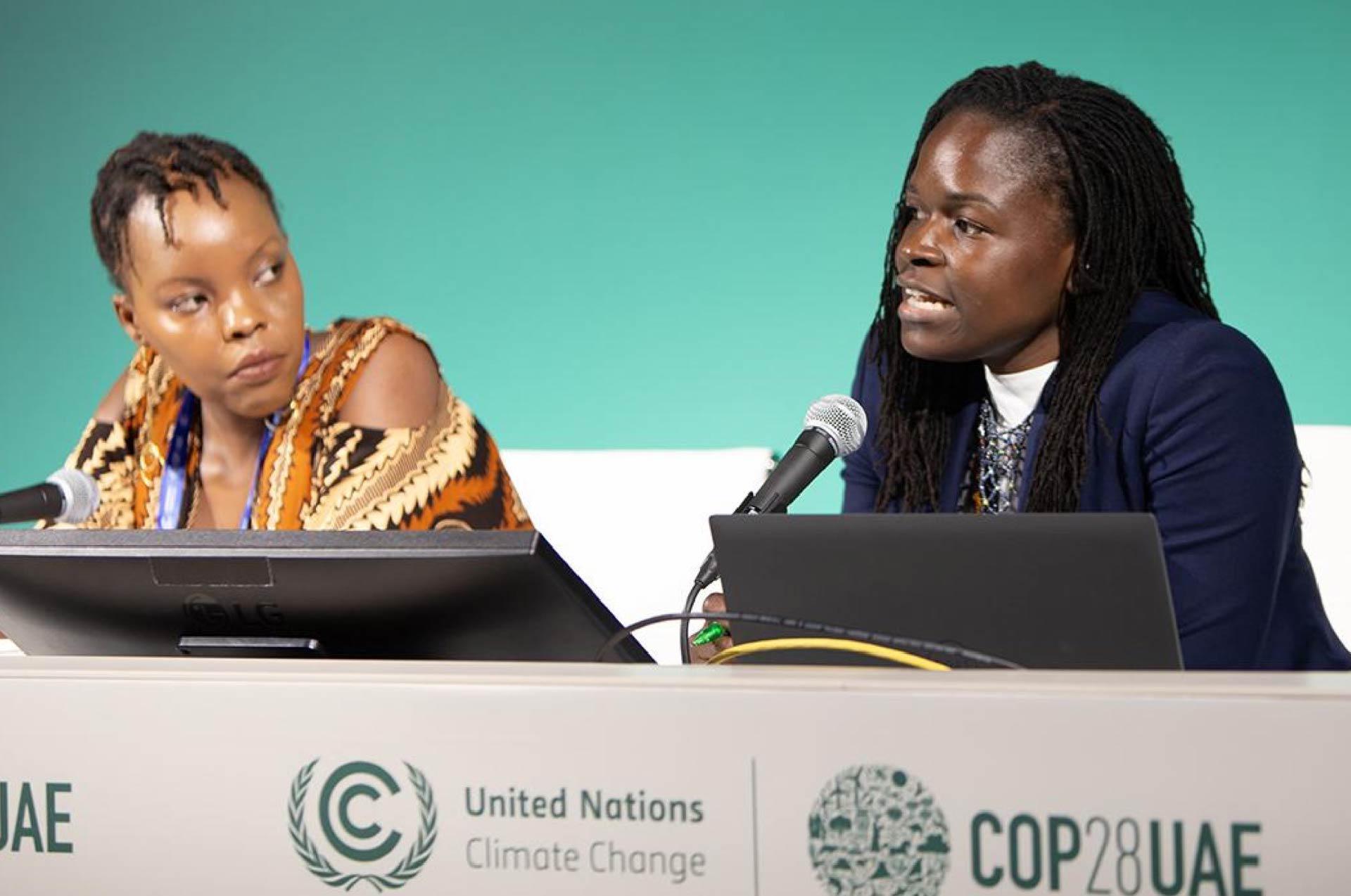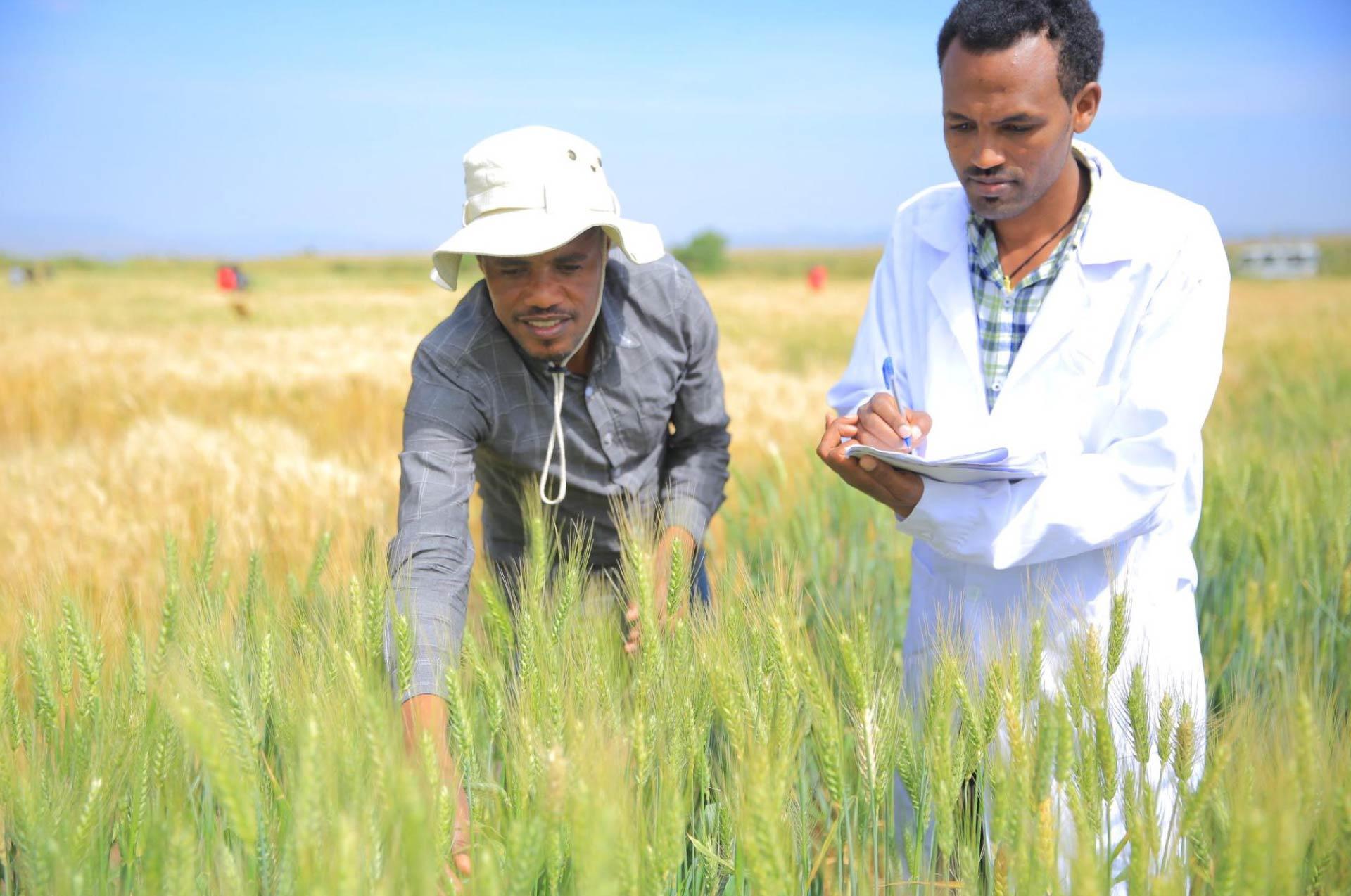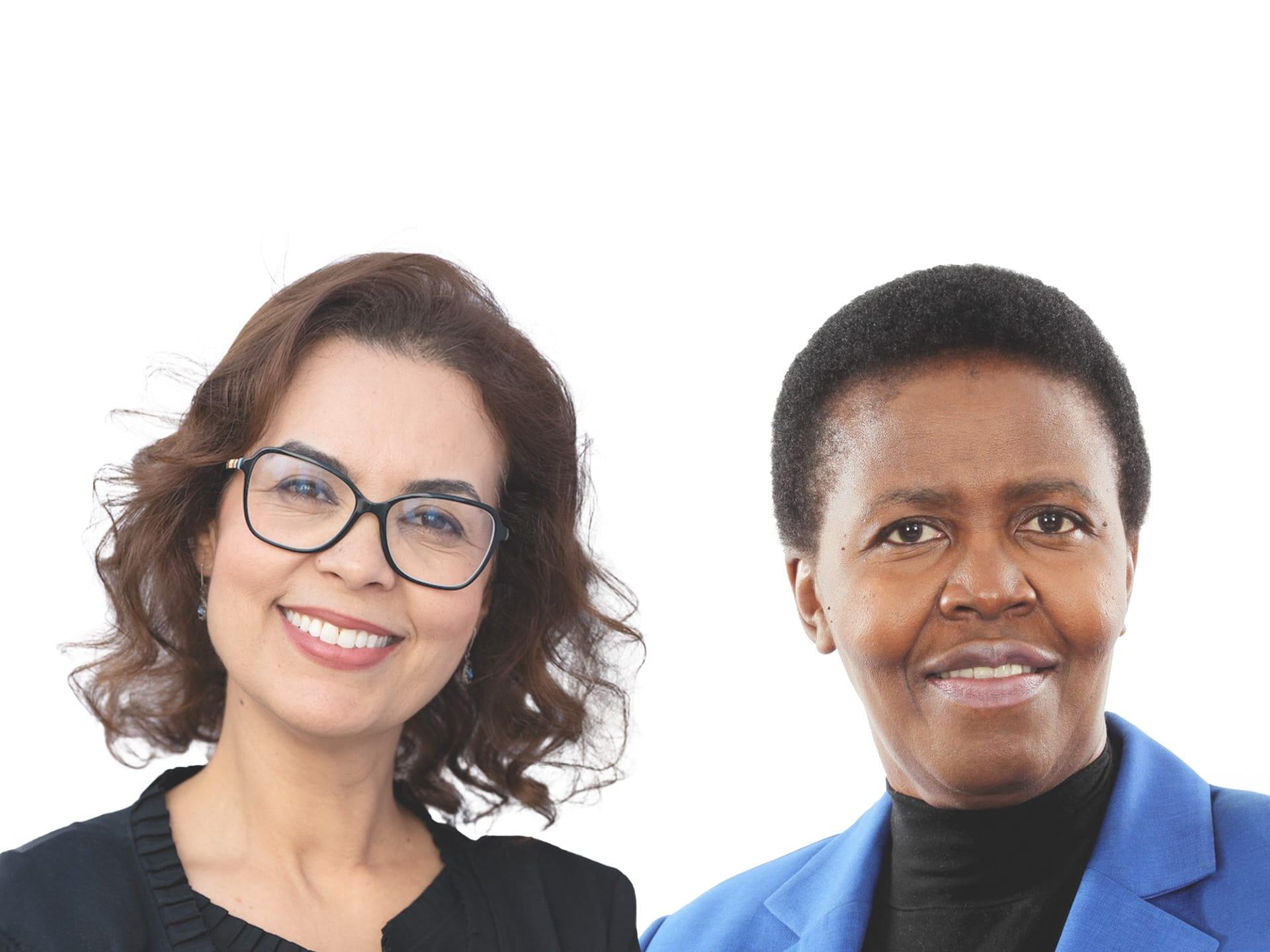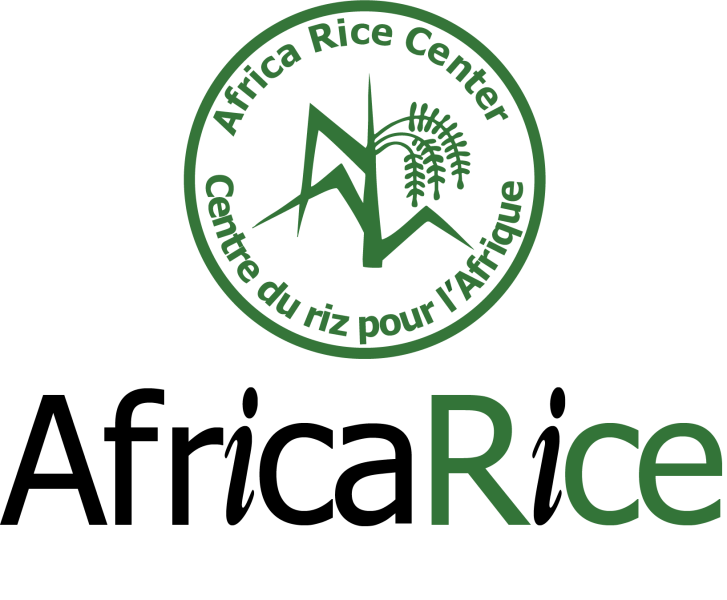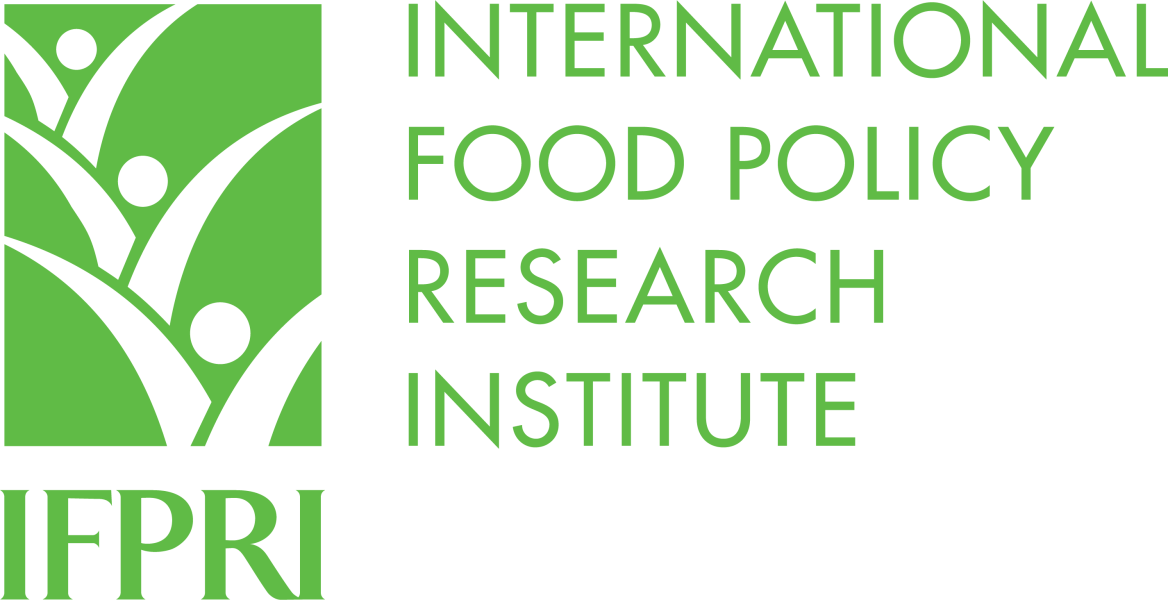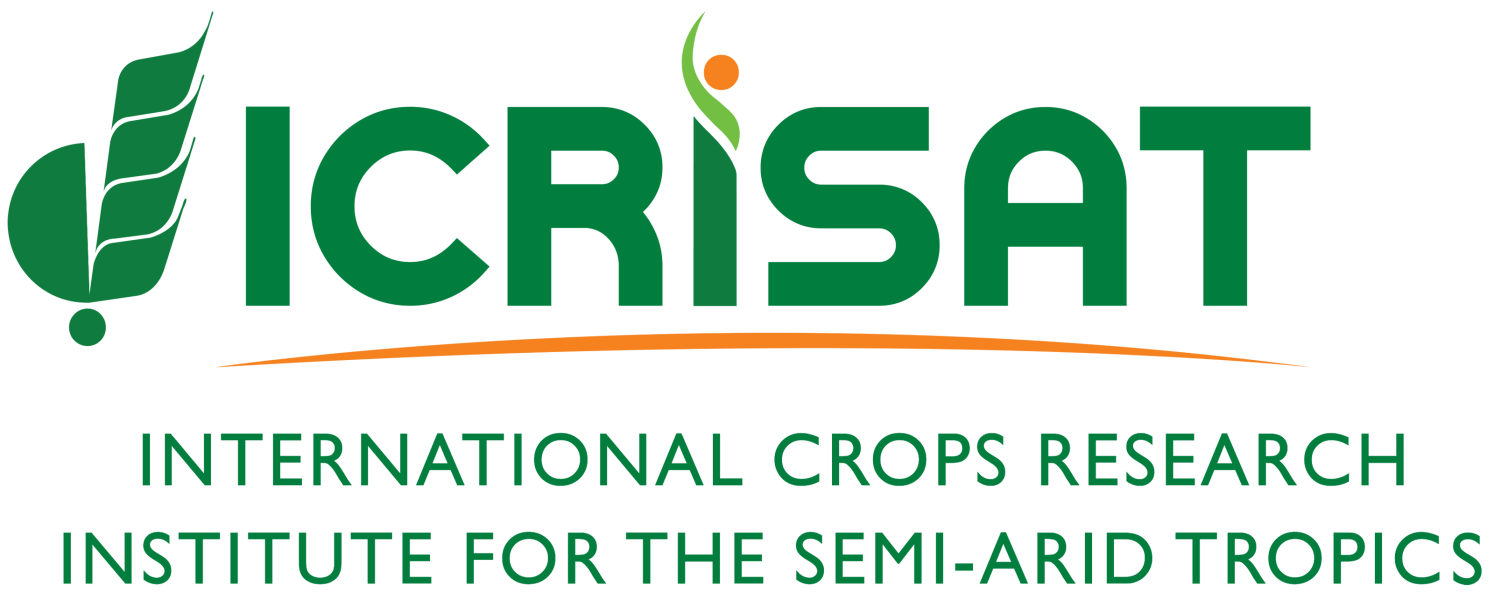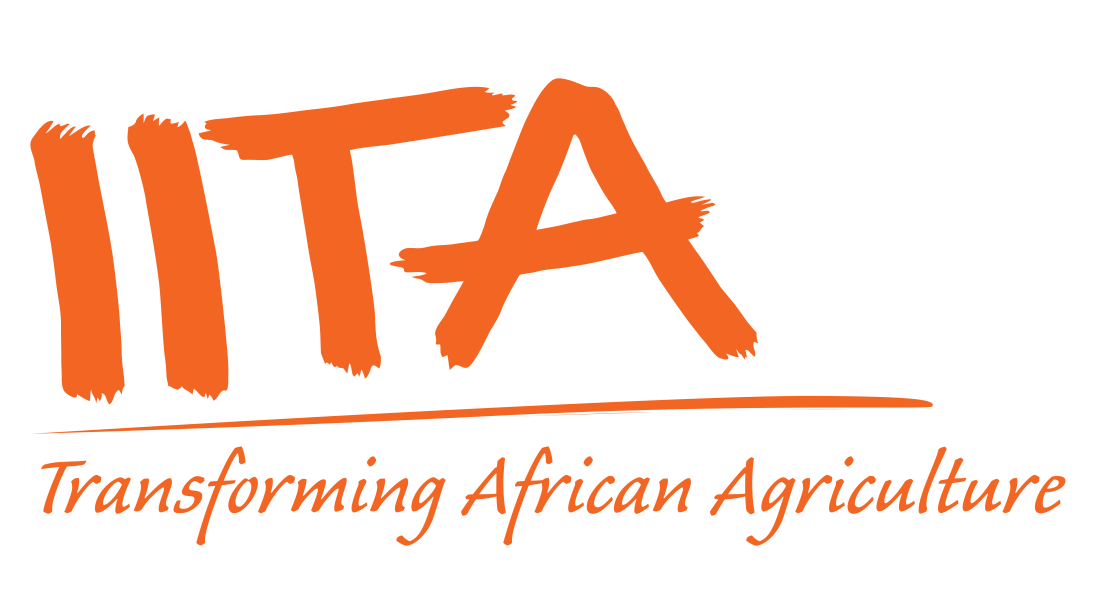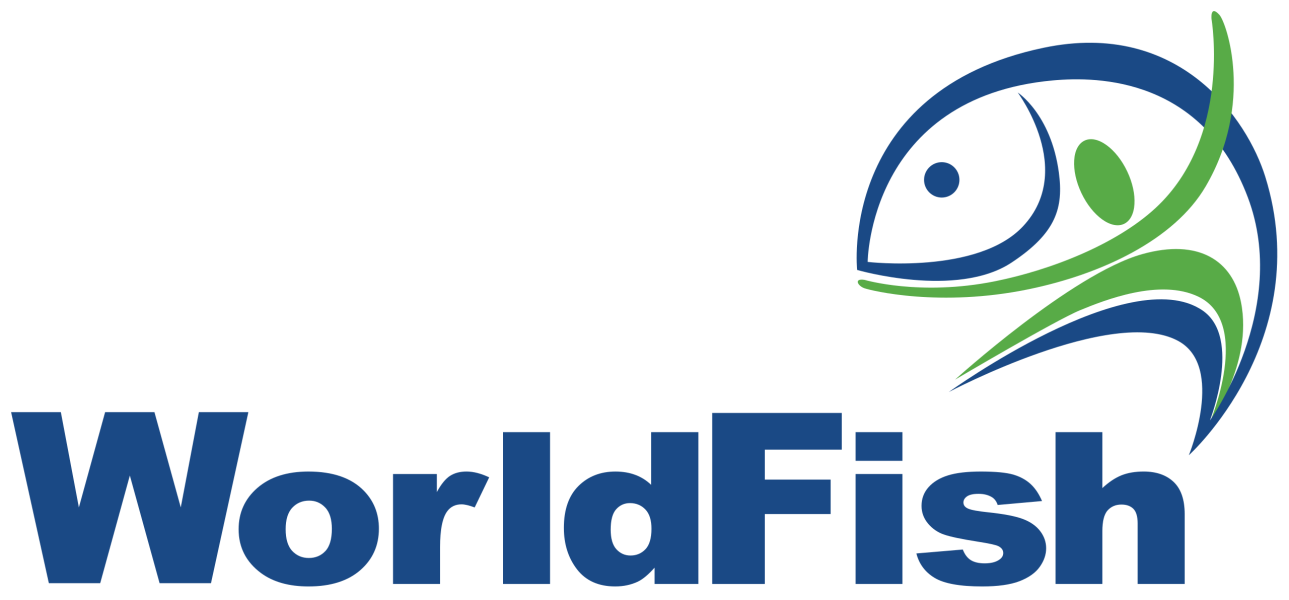This section analyzes the CGIAR Portfolio of results submitted in 2023 by Initiatives, Impact Platforms, and SGPs that map to the Environmental Health and Biodiversity Impact Area (EHBIA). The two collective targets of the EHBIA that address agrifood system challenges are: i) to stay within planetary and regional environmental boundaries: consumptive water use in food production of less than 2500 km3 per year (with a focus on the most stressed basins), zero net deforestation, nitrogen application of 90 Tg per year (with a redistribution towards low-input farming systems) and increased use efficiency, and phosphorus application of 10 Tg per year; and ii) maintain the genetic diversity of seeds, cultivated plants, and farmed and domesticated animals and their related wild species, including through soundly managed genebanks at the national, regional, and international levels. Of the 6,172 results reported in 2023, 3,142 results from across the entire portfolio (51 percent) were tagged to the EHBIA (353 principally, 2,789 significantly) (Figure 1).
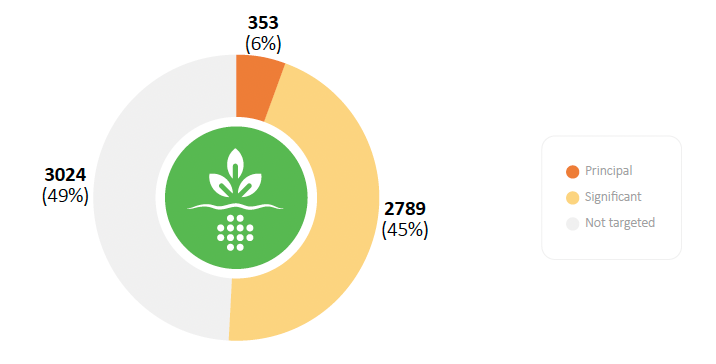
Figure 1. Results reported in 2023 tagged to the EHBIA.
Source: CGIAR Results Dashboard, accessed on 1 May, 2024.
Results by Science Group and Initiative
The ST Science Group emerged as the top contributor, with 156 principally and 798 significantly tagged results. Among the ST CGIAR Research Initiatives, Low-Emission Food Systems, Digital Innovation, and NEXUS Gains were the top contributors. The Regional Integrated Initiatives (RIIs) also made significant contributions, with 97 principally and 672 significantly tagged results. Among the RIIs, Fragility to Resilience in Central and West Asia and North Africa, Transforming Agrifood Systems in South Asia, and Asian Mega-Deltas were the top contributors.
The RAFS Science Group contributed 51 principally and 943 significantly tagged results, with Nature-Positive Solutions, Excellence in Agronomy, and Mixed Farming Systems being the top contributors. The GI Science Group contributed 42 principally and 300 significantly tagged results, primarily through the CGIAR Research Initiative on Accelerated Breeding) (Figure 2).
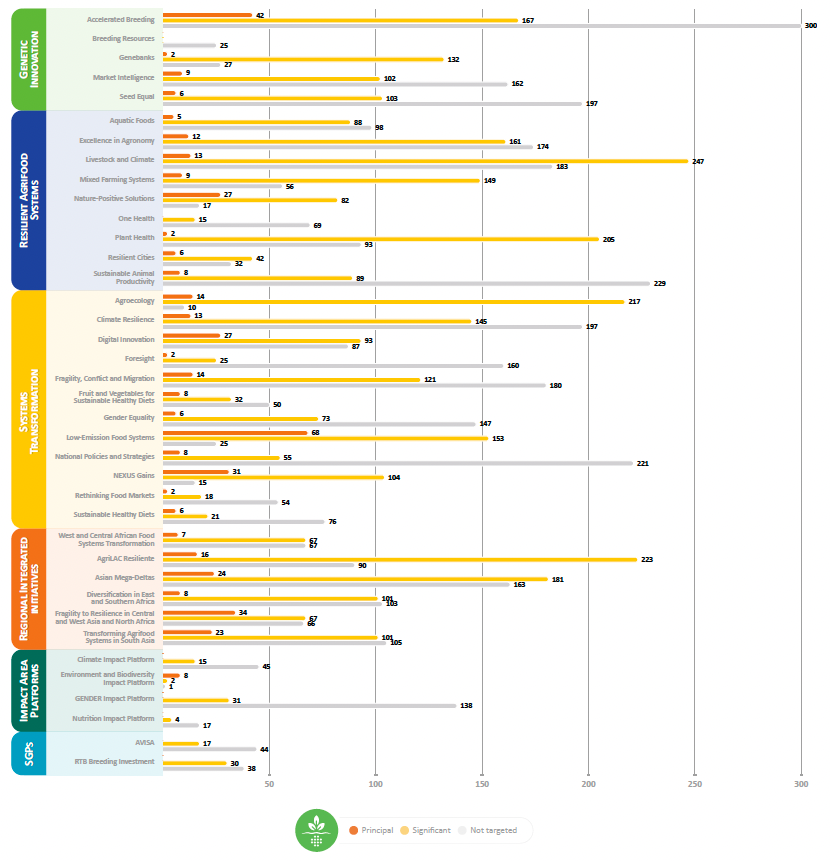
Figure 2. Types of results reported in 2023 tagged to the EHBIA.
Source: CGIAR Results Dashboard, accessed on 1 May, 2024.
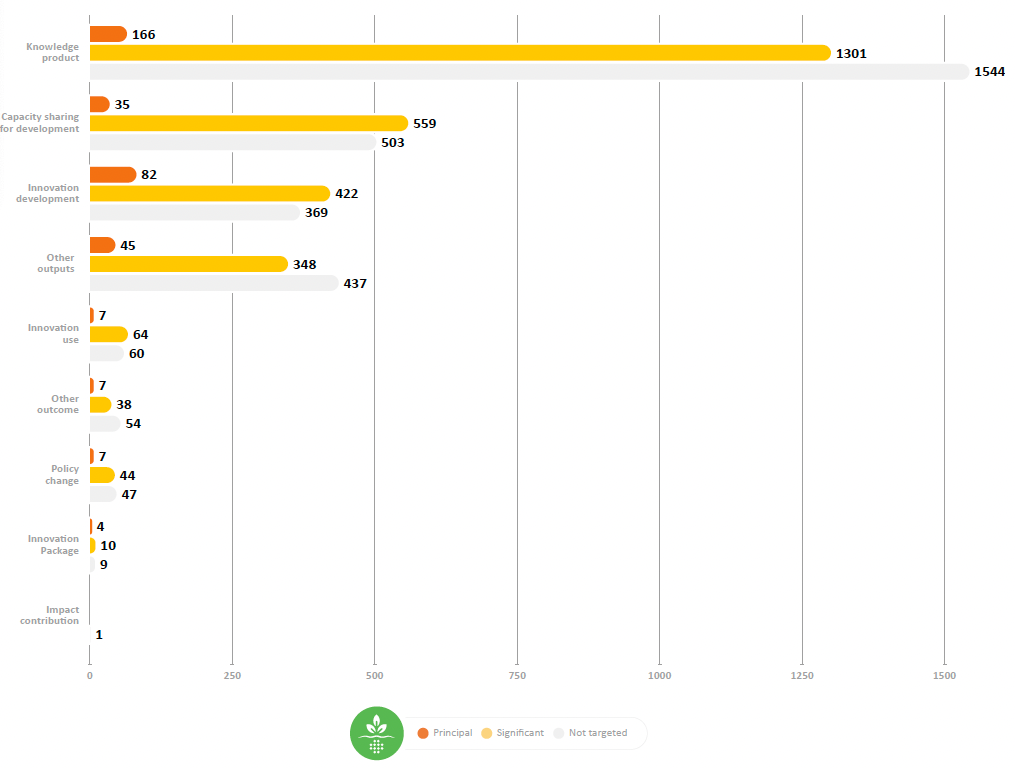
Figure 3. Types of results reported in 2023 tagged to the EHBIA.
Source: CGIAR Results Dashboard, accessed on 1 May, 2024.
Results by type
The majority of results tagged to the EHBIA were knowledge products, comprising 166 principally tagged results, including 57 journal articles, and 1,301 significantly tagged results, including 252 journal articles (Figure 3). Capacity sharing for development outputs accounted for 35 principal and 559 significant results, engaging more than 402 partners, 15 Centers, and training more than 199,795 people. Innovation development outputs comprised 82 principally and 422 significantly tagged results, spanned the full range of innovation readiness levels (Figure 4).

Figure 4. Number of innovation development outputs, by innovation readiness level, principal (left) and significant (right) tagged to the EHBIA.
Source: CGIAR Results Dashboard, accessed on 1 May, 2024.
Results by geographic distribution
The geographic distribution of results tagged to the EHBIA encompass all regions of the world (Figure 5). East and Southern Africa contained the most results tagged to EHBIA with 75 principally and 688 significantly tagged results; followed by Latin America and the Caribbean (41 principal, 421 significant); South Asia (45 principal, 382 significant); West and Central Africa (18 principal, 339 significant); Southeast Asia and the Pacific (55 principal, 263 significant); and Central and West Asia and North Africa (40 principal, 240 significant). Additionally, 595 results were tagged as “global” in scope, indicating their focus on addressing environmental health and biodiversity issues at a global scale.
The top ten countries with the most results tagged to the EHBIA are Kenya (26 principal, 250 significant), Ethiopia (18 principal, 189 significant), India (19 principal, 184 significant), Colombia (32 principal, 139 significant), Viet Nam (24 principal, 125 significant), Bangladesh (12 principal, 135 significant), Nigeria (9 principal, 129 significant), Guatemala (1 principal, 120 significant), Tunisia (7 principal, 111 significant), and Uganda (6 principal, 91 significant).

Figure 5. Geographic distribution of results tagged principal (n=353) (left) and significant (n=2,789) (right) to the EHBIA.
Source: CGIAR Results Dashboard, accessed on 1 May, 2024.
Results by partner type
More than 1,813 partners contributed to the 3,142 results tagged to the EHBIA (Figure 6). The primary partner types for these results are the NARES, other research organizations, and universities. The partners who collaborated with CGIAR on the most results tagged to the EHBIA were the Kenya Agricultural and Livestock Research Organization (KALRO), CIRAD, Wageningen University and Research Centre, FAO, the Ugandan National Agricultural Research Organisation (NARO), the Indian Council of Agricultural Research (ICAR), the Ethiopian Institute of Agricultural Research (EIAR), and Institut National de Recherche Agronomique de Tunis (INRAT), among many others.

Figure 6. Geographic distribution of results tagged principal (n=353) (left) and significant (n=2,789) (right) to the EHBIA.

Figure 7. Geographic distribution of results tagged principal (n=353) (left) and significant (n=2,789) (right) to the EHBIA.
Deep dive into the CGIAR Portfolio linked to main themes of the Impact Area
Land
Within the land theme, notable innovations include the My Farm Trees digital platform for community-led restoration efforts, the expansion of the Diversity for Restoration (D4R) tool to Colombia, the Targeting Tools web platform offering GIS tools for identifying suitable land areas for targeted interventions. Furthermore, a framework for measuring, reporting and verifying zero-deforestation agreements in Colombia, and a global platform for sharing information on rangelands status, changes, influencing forces, and restoration opportunities. Noteworthy outcomes include the restoration of degraded rangelands by Tanzanian pastoralist communities through participatory rangeland management and joint village land use planning, and the implementation of the Sustainable Rangeland Management Toolkit in Tunisia.
Capacity sharing for development activities included training sessions on rangeland management and restoration, land use mapping in Nandi County, governance for silvopastoral restoration in Tunisia and the use of online tools such as Cacao Diversity and D4R in Colombia. An e-learning course on planning seed and seedling supply for forest and landscape restoration (FLR) was also delivered.
Knowledge products focused on zero deforestation, rangeland management, and ecosystem restoration. Deforestation-related products covered areas such as deforestation-free supply and value chains, food systems drivers of deforestation, financing for zero-deforestation practices, and European Union (EU) deforestation-free regulation. Rangeland work included participatory management (here, here), governance (here, here), and restoration, while restoration work encompassed FLR in Africa (here, here, here) and Asia, land degradation and restoration in Vietnam, natural regeneration. Land degradation assessments were conducted in Ghana and Ethiopia. A noteworthy cross-cutting result is the “Ground Zero? Let’s get real on regeneration! Report 1: State of the art and indicator selection”.
Soil
To improve and maintain healthy soil, various approaches have been employed, including the development of diagnostic tools and capacity sharing events to monitor soil health indicators. These included creating standard operating procedures (SOPs) that provide step-by-step guidance on soil sampling, handling, and storage to assess soil chemical, biological and physical properties. In Bangladesh, digital soil mapping techniques were used to integrate soil data with digital data on topography, climate, vegetation, and land use, resulting in the creation of high-resolution maps of soil properties and characteristics.
A wide range of capacity-strengthening activities took place targeting producers in Honduras to enhance their knowledge of soil physical and chemical properties and raise awareness about the importance of natural resources like water, forests, and soil (here, here, and here). These efforts also educated producers on using soil parameters for plot diagnosis (here, here, here, and here). Capacity-building activities extended to early career researchers, including PhD students, through soil health research and development in Morocco (and here). A Community of Practice on Soil Health was established.
In conjunction with soil health, considerable work has been done to improve the efficient use and management of nutrients. Studies in South Asia highlighted the benefits of conservation agricultural (CA) practices for improving maize growth and yield, showing that farmers can achieve better results through CA-based permanent beds and the use of USG for nitrogen management. Similar studies focused on improving nutrient use, particularly nitrogen, in the crops of banana, grass, rice, and rice-wheat systems. An assessment of land suitability for cereal-forage legume mixed cropping systems was conducted in Ethiopia. To address the issue of nitrogen from fertilizers being released as nitrous oxide emissions, a farmer-focused monitoring, reporting, and verification framework (MRV) for tracking fertilizer-induced nitrous oxide emissions was developed.
Water
In water-related domains, numerous innovations have been developed to conserve water environments and aquatic ecosystems. These innovations include technological advancements to improve water use efficiency, such as automated water level sensors equipped with SMS notifications to enable rice farmers to make informed irrigation decisions.
Significant progress has been made in developing monitoring systems and assessment methodologies for water environments. A groundwater monitoring system co-developed and pilot-tested with the Punjab Irrigation Department in Pakistan has been adopted and implemented by Punjab and other provinces. Several water quality modeling systems have also been developed: FISHTRAC, a real-time monitoring system tracking water quality dynamics using fish-attached sensors; MiniSASS, a biomonitoring tool for assessing river system health and water quality through macroinvertebrate communities; and Enviro-Champs, a community-driven initiative in South Africa engaging youth in environmental observation.
For water environment assessment, a methodology has been developed to determine the environmental flow requirements of the Limpopo River basin in southern Africa. This methodology determines the river discharge needed to maintain the river's current ecological state and assesses the risk of failure of the many ecosystem services relied upon by communities living in contact with the river. These tools and methodologies (here, here, and here) serves to enhance the monitoring capabilities and decision-making capacities in agricultural water environment management.
Biodiversity
Several innovations have been developed to help manage biodiversity-related tradeoffs. The Agrobiodiversity Solution Hotspot Tool helps stakeholders address water, energy, food and environment challenges by identifying priority interventions to restore and enhance ecosystem functions and services. The Rikuy-Agrobio toolbox enables in-situ agrobiodiversity monitoring from genes to landscapes. The optimized biodiversity management of rice-based ecosystems in Cambodian farming communities focuses on finding optimal rice and crop combinations to improve ecosystem services, human health, and economic benefits for farmers.
A study on freshwater systems explored ten critical factors for the successful implementation of environmental flows (e-flows) and biodiversity outcomes. Another study reviewed national and regional approaches to river health monitoring, proposing scalable indicators to support “top-down” global surveillance as well as “bottom-up” local monitoring efforts. Another study cataloged nine fundamental ecosystem services provided by the biotic components of indigenous freshwater biodiversity such as fish, frogs, microbes, and macrophytes. These services include material (food, health and genetic resources, material goods), nonmaterial (culture, education, recreation), and regulating services (catchment integrity, climate regulation, water purification, nutrient cycling), emphasizing the need for the integrated conservation of freshwater biodiversity.
Capacity sharing efforts included webinars (here and here) and a 10-day event in Peru provided a wide range of stakeholders with practical insights into integrated crop genetic conservation for agrobiodiversity conservation.
Considering genetic diversity, stakeholders surveyed on breeding priorities in the face of climate change and consumer demands discussed tools and approaches to discover, validate, and incorporate novel genetic diversity into breeding populations. In Sri Lanka, the diversity of underutilized vegetables and fruit was assessed, highlighting the importance of collecting and conserving genetic diversity for food and nutrition security.
Key result stories
Each year, every Initiative/Impact Platform/SGP reports one of its outcomes as a detailed “key result story” (KRS). Three Regional Integrated Initiatives reported KRSs where the results were principally tagged to the EHBIA. The CGIAR Research Initiatives on AgriLAC Resiliente and Low- Emission Food Systems collaborated in Colombia to promote cocoa agroforestry and silvopastoral production in regions with a history of armed conflict, as a way to foster peacebuilding, improve rural livelihoods, protect and restore the environment while increasing carbon storage. The CGIAR Research Initiatives on Asian Mega-Deltas, Excellence in Agronomy, and Low-Emission Food Systems worked together to mainstream and scale innovations such as rice straw-based circular economy in countries within the Lower Mekong River Basin. The CGIAR Research Initiative Fragility to Resilience in Central and West Asia and North Africa released the online Water Accounting Dashboard for the Souss-Massa River Basin in Morocco. The dashboard serves as a user-friendly visual tool for stakeholders to monitor current water status and trends, enabling informed decision-making for the sustainable and equitable management and cross-sectoral governance of scarce freshwater resources.


